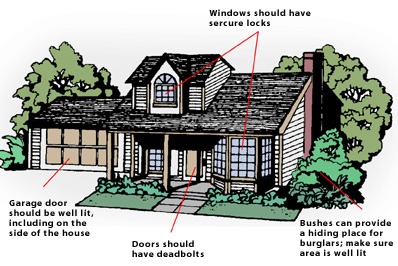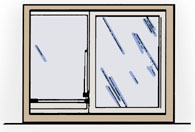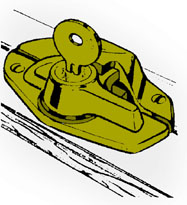 |
||
 |
||

|
 |
||
 |
||

|
Making your home secure isn't a matter of buying certain products–it's an overall strategy that combines locking the house tightly, eliminating the ways that intruders can conceal themselves on your property, and giving the appearance that you are home, whether you are or not.
 |
| FIG. 1 - Critical security areas in your house. |
Intruders aren't the only problem. Your home security strategy should also involve preventing accidents on your property. Many of the same things you do to protect your property from intruders are the same things you do to prevent accidents and to make your home more convenient and comfortable.
Home security systems used to be wired in during new construction, and retrofitting a system was an expensive job that could only be done by professionals. Today, combination home automation/home security systems are available that are so easy to install that they hardly qualify as do-it-yourself projects. This brochure describes the procedures involved in setting up such a system as part of an overall home security strategy.
The most important aspect of any security system is balance–it does no good to make your windows burglarproof when your doors can be opened more easily with a pry bar than with a key. Before you invest in an automated system, first take stock of the simple, everyday security measures that should already be in place.
|
|

SECURING DOORS
|
|
|
|
|

FIG.
3 - Sliding
patio doors are one of the most vulnerable points in the house. They
can be secured inexpensively with a hinged bar that holds the operating
panel shut.

FIG.
4 - Sash
locks are an inexpensive way to improve the security of double-hung
windows.
|

SECURING WINDOWS
|
|
|
|
|
FIG. 5 - Low-voltage
lighting is easy to install and adds to the appearance of your home.
FIG. 6 - A lamp module
simply plugs into the existing outlet. The lamp is plugged into it,
and can be controlled remotely.
FIG. 7 - A motion-detector-controlled
floodlight can be set to varying sensitivity, so it ignores stray cats
but comes on when visitors--or burglars--enter the driveway.
|

LIGHTING
|
||
|
|
|||
Outlet/Appliance Modules
Motion Detector
Floodlight/Motion Detector Combination
Electrical Tester
Screwdriver
Check your state
and local codes before starting any project. Follow all safety precautions.
Information in this document has been furnished by the National Retail Hardware
Association (NRHA) and associated contributors. Every effort has been made
to ensure accuracy and safety. Neither NRHA, any contributor nor the retailer
can be held responsible for damages or injuries resulting from the use of
the information in this document.